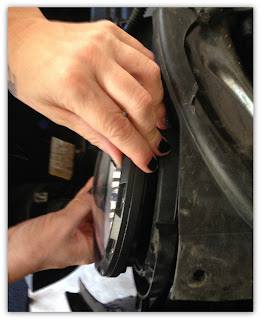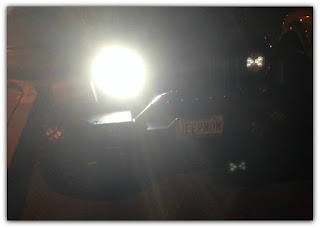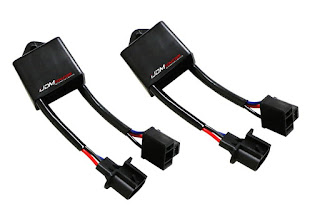 Many Jeep Wrangler owners have opted to get aftermarket LED headlights. They are a very popular solution to the headlight woes of the Original Manufacturers headlights on the Wranglers.
Many Jeep Wrangler owners have opted to get aftermarket LED headlights. They are a very popular solution to the headlight woes of the Original Manufacturers headlights on the Wranglers. Back in August I replaced my headlights with Auxbeam headlights. Auxbeam asked me to try out their headlights so I gave it a try.

Well...I was driving home from work the other night when I noticed one of my headlights seemed to be out. When I got out of the Jeep my driver’s side headlight was at “half light” for the lack of better terminology. My husband came out and fixed it the professional way. He hit it with his hand. The light came back up to “full light”.
 I also noticed some flickering, but only on the driver’s side. Which makes me wonder if I properly installed and plugged in the lights. Well, it has been just too darn cold to work on the lights. And my garage is not heated. So instead, I decided to do some research, and ask around.
I also noticed some flickering, but only on the driver’s side. Which makes me wonder if I properly installed and plugged in the lights. Well, it has been just too darn cold to work on the lights. And my garage is not heated. So instead, I decided to do some research, and ask around.I have come up with 4 possible solutions.
FIRST: Do a little detective work swap the lights to see if it’s the same light or the housing mechanism. Maybe I just didn’t plug it in good enough.
SECOND: would be to try what a former auto mechanic friend suggested and that is to use dielectric grease. You apparently use this on the plug and it’s suppose to help conductivity. Or so I am told. But I also read. The most frequent Internet complaint is that dielectric grease insulates connections, making connections less conductive.
THIRD: Check to make sure my connections are good and not gunked up.
FOURTH: During my research I found that flickering among LED’s is common. I came across what’s called Anti-flicker decoders. I am told the flicker is because the headlight high and low beam circuits have a PWM regulation on them - pulse width modulation. A mode that basically pulses DC power to keep at average wattage. This is not compatible with LED headlights.


